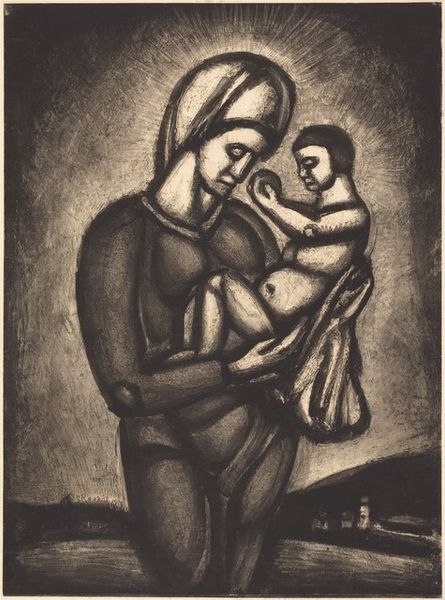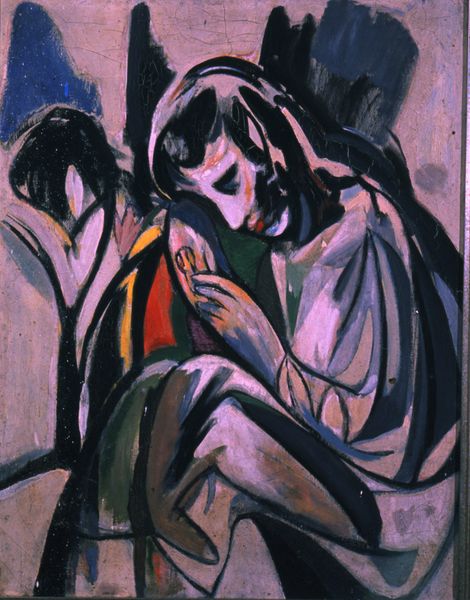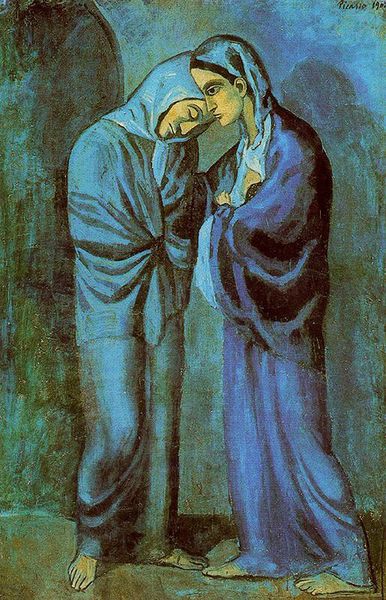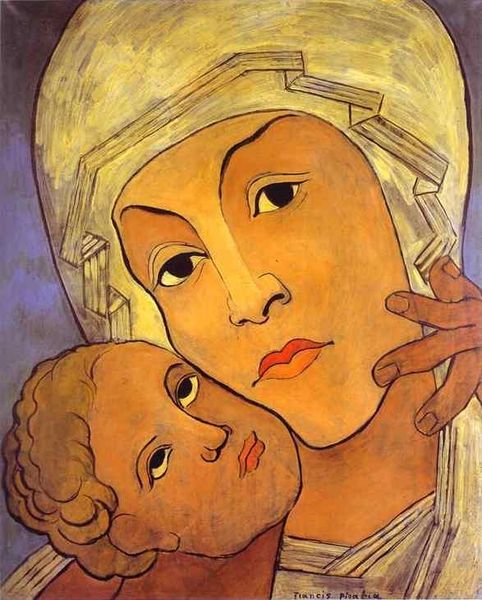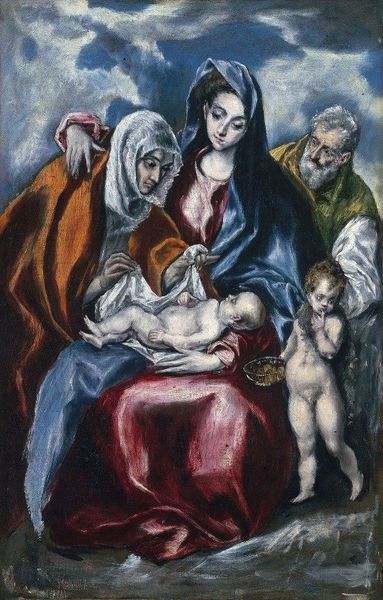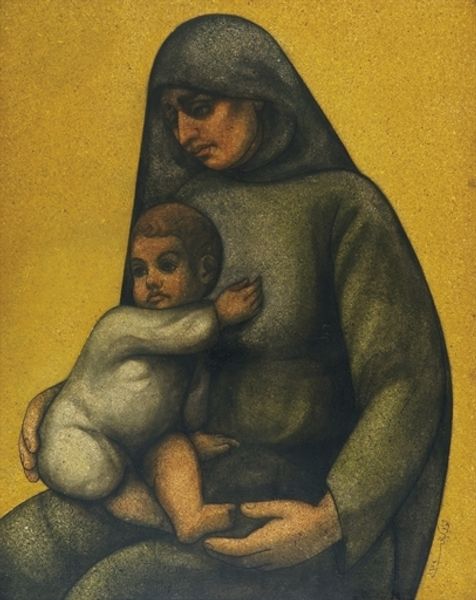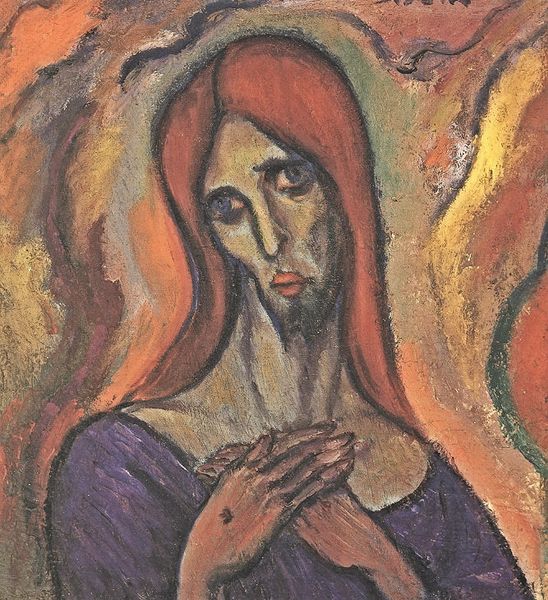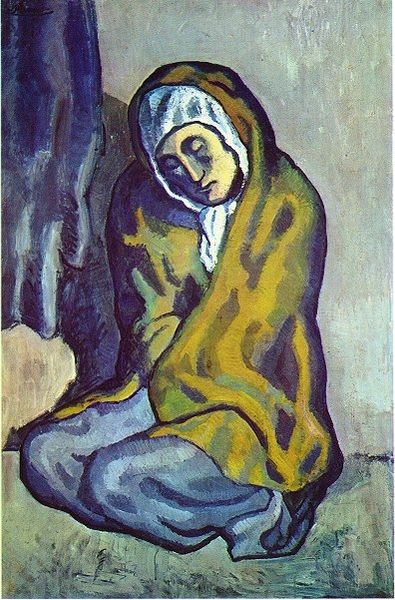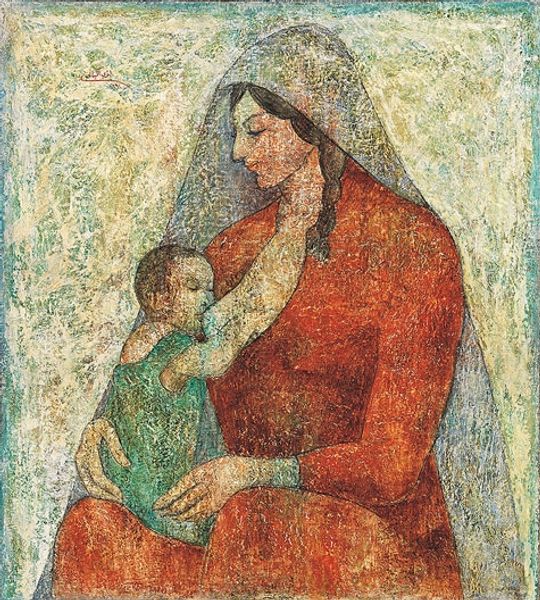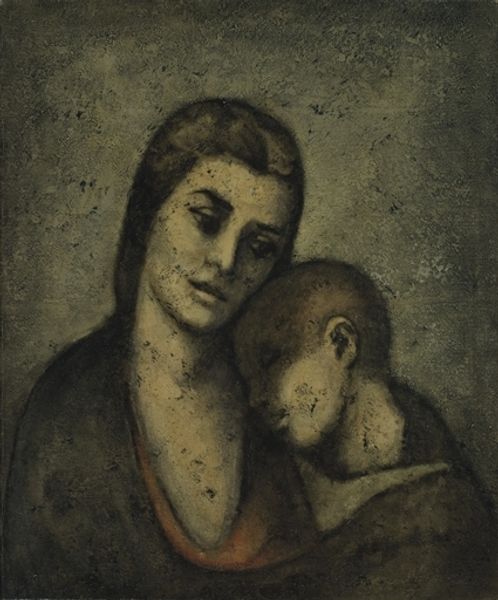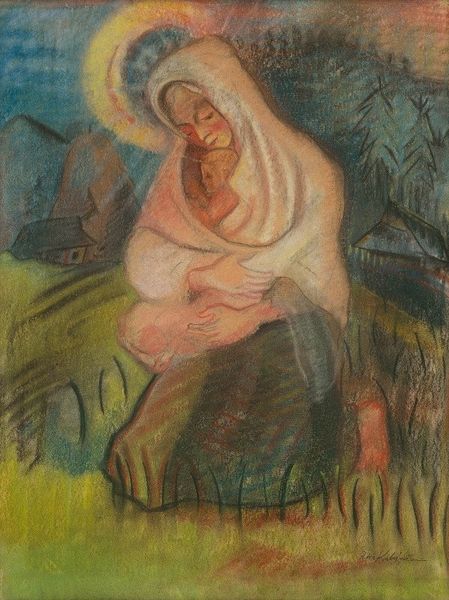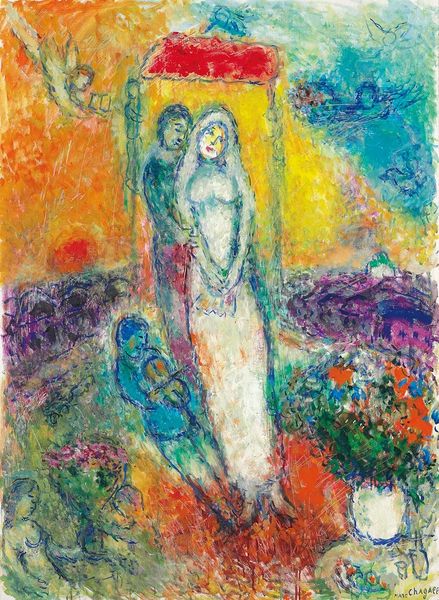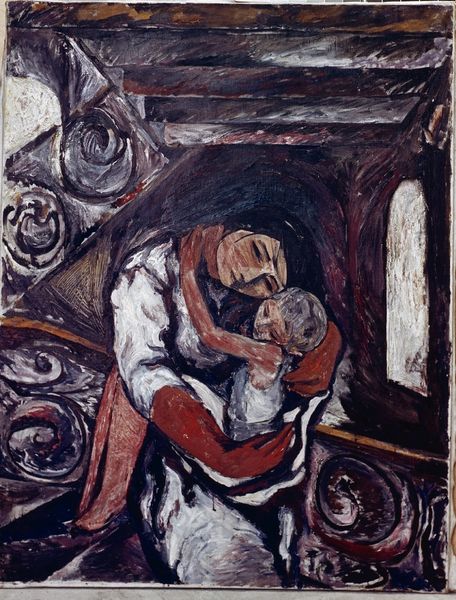
painting, oil-paint
#
mother
#
painting
#
oil-paint
#
figuration
#
oil painting
#
child
#
expressionism
#
symbolism
#
portrait art
Dimensions: 112.3 x 97.5 cm
Copyright: Public domain US
Curator: Here we have Pablo Picasso's "Mother and Child," an oil painting completed in 1902, currently housed at the Fogg Museum. Editor: The first thing that strikes me is its almost suffocating sense of melancholic enclosure. The monochromatic blues dominate the visual field, compressing the figures. Curator: The near-monochromatic palette is indeed a defining characteristic. It’s exemplary of his Blue Period. Notice how Picasso uses the restricted tonal range to create subtle variations in texture and form. Editor: Yes, the relentless blue certainly conveys sorrow. Beyond the aesthetic choice, blue is so often associated with the Virgin Mary, with purity, hope, even in times of deep sadness. Here, it feels like the universal image of maternal protection. Curator: Absolutely, and one can see how the composition directs the gaze. The figures are closely entwined. See the curves and counter-curves as their bodies embrace, generating an emotional intensity through pure form? Editor: The almost unnatural whiteness of the mother’s hand is also noticeable—reaching, perhaps, to indicate poverty, illness. It serves as the symbolic representation of human fragility against life's hardships, wouldn’t you say? The bond is, on the one hand, the universal motif of maternity, and, at the same time, of vulnerability. Curator: Interesting! I saw it as a contrast – a point of tension – but I see what you're saying. Look closely, though, at how Picasso employs loose, expressive brushstrokes, building up the layers of paint to give a sculptural quality. Editor: That’s very perceptive. What is interesting to me is the universality of the bond depicted, how Picasso transforms personal emotion into enduring archetypes, something everyone who has known maternal affection and human suffering will recognise. Curator: Precisely. He builds it with pure composition and pictorial unity. We started with emotion, and the painting takes us back to structure. Editor: Indeed; perhaps it’s precisely this enduring tension between formal construction and archetypal symbols which sustains this work's poignant power.
Comments
No comments
Be the first to comment and join the conversation on the ultimate creative platform.

